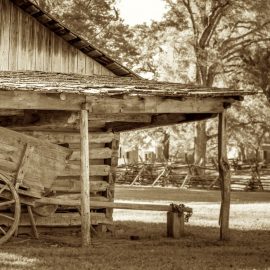

This article is an excerpt from the Shortform book guide to "The Autobiography of Malcolm X" by Malcolm X and Alex Haley. Shortform has the world's best summaries and analyses of books you should be reading.
Like this article? Sign up for a free trial here.
Why did Malcolm X’s family move frequently when he was a child? What was his experience in school like? How did he get involved in criminal activity?
Malcolm X believed that the racism he experienced throughout his childhood to adolescence determined the path he would take as an adult. Racist violence and structural inequality destabilized and discouraged a young Malcolm X—and ultimately led him to spend time in prison.
Read more to learn about Malcolm X’s early life, based on his autobiography.
Malcolm X’s Early Life
Malcolm X explains that he was born Malcolm Little on May 19, 1925, in Omaha, Nebraska. (Shortform note: He eventually dropped “Little” and changed his name to Malcolm X, but we’ll still refer to him as Malcolm X.)
Malcolm X’s early life was anything but safe and stable. From the time he was born, his family was constantly being threatened by racists, in part because his father, Earl Little, was associated with Marcus Garvey’s Back-to-Africa movement, which argued that Black Americans must move to Africa to attain dignity and self-determination. As a result, the family moved often; eventually, they settled in Lansing, Michigan.
(Shortform note: Historians explain that, between 1880 and 1940, Black Americans faced particularly high levels of racial terrorism—a pattern of violence and intimidation with the aim of keeping them subordinate to white people, ultimately buttressing white supremacy. Examples of racial terrorism include lynchings and the fearsome activities of the Ku Klux Klan (KKK)—whom Malcolm X later charged with perpetrating much of the violence his family experienced. Marcus Garvey’s Back-to-Africa movement was born partly in response to racial terrorism—he believed white people would never respect Black people, so his solution was complete Black self-sovereignty. The US government eventually deported Garvey for his politics.)
When Malcolm X was six, his father died, and the family suffered tremendously because Little had been the sole breadwinner and the Great Depression was on. His death was ruled a suicide, but his family and community believed racists had murdered him. The family received some welfare and Malcolm X’s mother, Louise Little, tried to work, but the racism she encountered made it hard for her to keep a job. She was multiracial and appeared white, but, when employers eventually found out that she was Black, they fired her. Malcolm X recalls that he began stealing food at this point.
Under incredible strain trying to keep the family together, Malcolm X’s mother struggled with her mental health and eventually became incapable of caring for her children. The state removed them and committed her to a psychiatric hospital. Upon reflection, Malcolm X believed that his mother lost her children and her mental health because the state didn’t give her enough help—and he asserts that this ordeal was equivalent to slavery since white people with greater social power ended up with custody of a Black woman’s children.
For a while, Malcolm X lived with a family he knew, but, after he got into some trouble at school, he was expelled and sent to live at a juvenile detention facility run by white people, whom he says were nice but treated him as less-than-human because he was Black. He was enrolled in a school where he was one of only a few Black students and was at the top of his class. However, one of his teachers told him that, regardless of how intelligent and likable he was, he would never be able to attain a professional career because he was Black—he was only suited for manual labor. He explains that this made him feel discouraged and indignant about racism; as a result, he stopped putting in effort at school.
By this time, Malcolm X had already met his older sister Ella—his father’s daughter from a previous marriage—and stayed a summer with her in Roxbury (a neighborhood of Boston). This stay had a huge impact on him because Roxbury was a thriving Black cultural center—Malcolm X explains that it was the first time he was exposed to such a magnitude of Black success. After the incident with his teacher left him feeling defeated, he asked Ella if he could live with her—she agreed, and he moved there after eighth grade.
Limited Options
Ella encouraged Malcolm X to get to know the nice parts and people of Roxbury, but he was drawn to the ghetto. In the ghetto, he befriended a man named Shorty, who helped him get a job as a shoeshiner at a nearby ballroom. Eventually, he moved in with Shorty—partially because Malcolm X started dating a white girl named Sophia, which Ella didn’t like. He explains that hanging out with Shorty and his friends changed him in a few ways: He started to gamble, drink, and smoke cigarettes and marijuana. He also learned how to dress and talk as they did in the city.
Malcolm X had a few different jobs and eventually landed a gig as a cook on a train. At first, he excelled at this job because, he explains, he acted like an “Uncle Tom”—a Black person extremely devoted to serving white people. The train sometimes took him to Harlem, and, the more time he spent there, the more he loved it and the more uninhibited he became in his interactions with white people. It showed in his work, and ultimately he was fired for being disrespectful to passengers. At 17, he moved to Harlem to work at a nightclub called Small’s Paradise.
From his customers at Small’s Paradise, Malcolm X learned more about Harlem’s history—how it came to be an all-Black area and why it seemed to cater to whites anyway (it was the Harlem Renaissance, a period of Black cultural enrichment, and white people enjoyed consuming Black entertainment). He also learned about the rules of hustling—making money through illicit means—from his customers, especially those few who were involved in the underground crime scene. Malcolm X explains that the criminals he knew became criminals because white society deprived them of the opportunity to fulfill their true potential—they turned to crime in order to survive, and they did drugs to help them deal with the pressure.
Malcolm X, too, would start committing crimes and doing drugs to get from day to day. For example, he says that he sold marijuana, got involved in the illegal gambling scene, and started doing cocaine so that he could steel himself for robbery. Over time, this began to catch up to him—he felt emotionally lifeless, and the drugs were making him sick. After an altercation with another hustler almost ended in violence and led him to go on a multi-drug-fueled bender, Shorty took him back to Boston.
After returning to Boston, Malcolm X decided to start a burglary ring involving Shorty, their friend Rudy, Malcolm X’s girlfriend Sophia, and her sister. Since the women were white, they could get into houses by pretending to have legitimate business there (like selling encyclopedias, for example), which Black men couldn’t do without arousing suspicion. When they left, they could tell the men how the house was set up and where there were any items worth stealing. Their burglary scheme was successful, but Malcolm X explains that he continued doing a lot of drugs to help him deal with his anxiety about being caught.
Eventually, they were caught—and Malcolm X was sentenced to eight to 10 years in prison at the age of 20, despite the average sentence for first-time burglary convictions being only two years.

———End of Preview———
Like what you just read? Read the rest of the world's best book summary and analysis of Malcolm X and Alex Haley's "The Autobiography of Malcolm X" at Shortform.
Here's what you'll find in our full The Autobiography of Malcolm X summary:
- Malcolm X explains why he believed what he believed
- The historical and sociological context surrounding Malcolm X’s life
- Why Malcolm X was such a controversial figure






